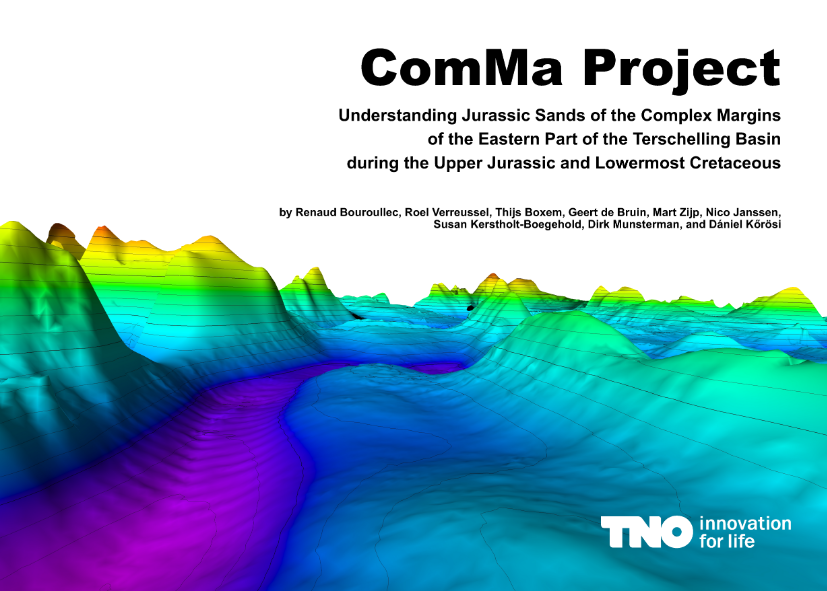COMMA report: Understanding Jurrasic Sands of the Complex Margins of the Eastern Part of the Terschelling Basin during the Upper Jurassic and Lowermost Cretaceous

Download appendices: Appendices
In the COMMA Project we investigated the Upper Jurassic and Lower Cretaceous in the Terschelling Basin located in the Dutch offshore. The main aim of the project was to provide new insights on the regional and local stratigraphic, depositional and syn-depostional settings within the basin, with a special focus on the margins of the basin where poorly understood sand accumulations might be present.
The results obtained from the combination and integration of various analytical techniques were used to produce a new stratigraphic, tectono-stratigraphic and paleogeographic models for the Upper Jurassic and Lower Cretaceous in the Terschelling Basin. The COMMA project strongly improved the understanding of the Upper Jurassic and Lower Cretaceous in the Terschelling Basin by providing a calibrated tectono-stratigraphic framework based on modern concepts of sequence stratigraphy and syn-depositional tectonic models. The use of regional seismic and well correlation panels helped to better constrain the main depositional systems (Terschelling Sandstone Member, Noordvaarder Member and Scruff Greensand Formation) identified in the study area as well as their varying preservation potential within and outside the Basin. New paleogeographic maps give a clear picture of the paleo-coastlines trajectories, their changes through time and the interplay between multiple sediment sources and depositional systems.